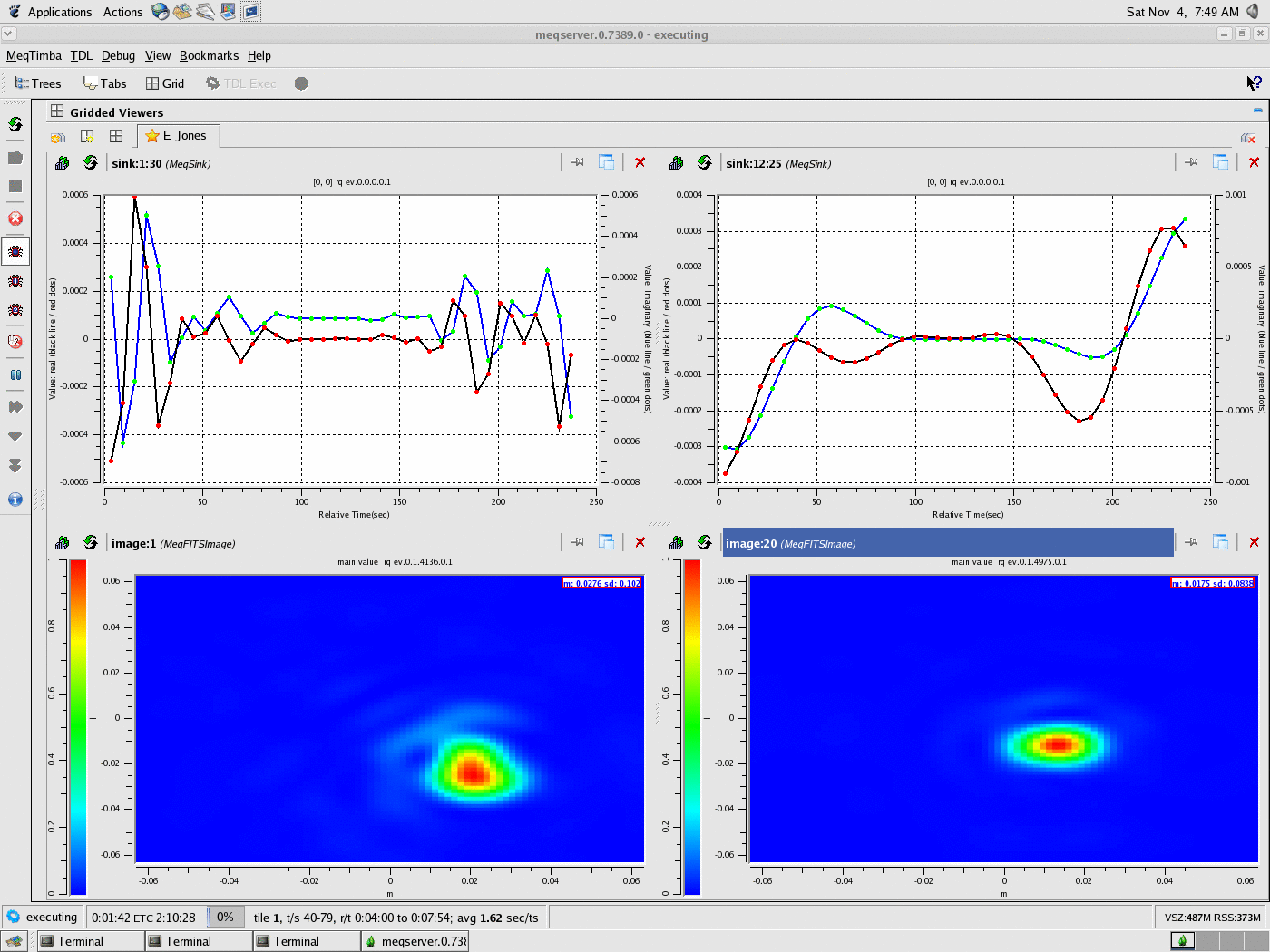Daily Image
15-11-2006Focal Plane Array Simulation for the xNTD
| Submitter: | Tony Willis |
| Description: | These two screenshots show some results of a MeqTrees simulation of the proposed Australian 'xNTD' SKA pathfinder telescope operating at 1400 MHz. Our simulation assumes the xntd has a diameter of about 7 km (the antenna configuration was provided by T. Cornwell) and that each antenna has a nominal primary beam Half-Power width of 1 degree. We further assume that the antennas have Azimuth-Elevation mounts and that they each have a focal plane array of Vivaldi antennas with 100 separate beams on the sky. For our simulation, we have taken some beam shapes originally calculated by W. Brisken (NRAO) for the VLA at 311 MHz and scaled them to a nominal 1 degree HPBW at 1400 MHz. Two of these beams are shown in the bottom of the first figure. We can take these beams and 'form' a well shaped beam in a particular direction on the sky (3 degrees from the phase tracking centre for our simulation) by use of a device called a 'beamformer'. In the case of an AzEl telescope the beams will move on the sky as a function of time, unless the beamformer adjusts the weighting of the beams at regular intervals of time. The two displays at the top of the screen show the differences in visibilities obtained by updating the beamformer every integration period (6 seconds) vs updating the beamformer every 4 minutes. The differences remain fairly close to zero for the central 50 seconds, so we probably only have to update the beamformer at about 50 second intervals. The second image shows similar visibilites obtained when we use perfect Gaussian beams for the simulation. The agreement between the two simulations is very good. Only about 160 lines of MeqTrees code was required for the simulation. |
| Copyright: | MeqTrees Foundation |
| Tweet |  |
